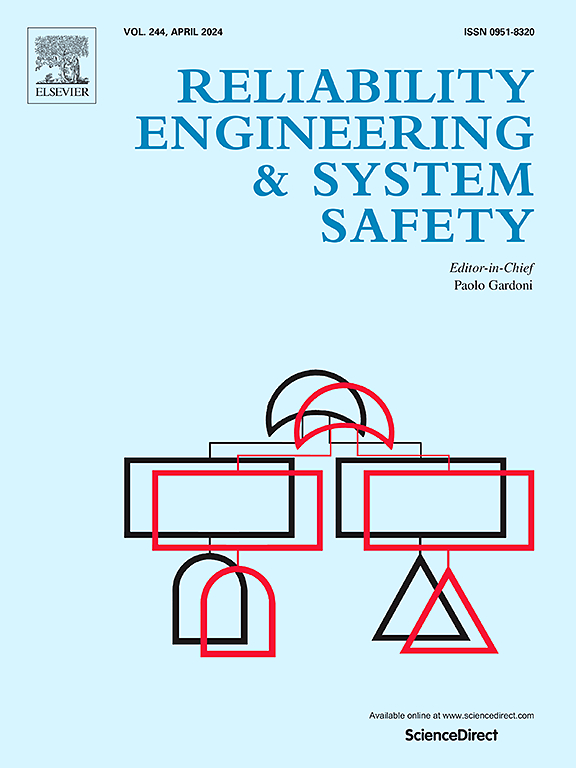Fault Impulse Inference and Cyclostationary Approximation: A feature-interpretable intelligent fault detection method for few-shot unsupervised domain adaptation
IF 9.4
1区 工程技术
Q1 ENGINEERING, INDUSTRIAL
引用次数: 0
Abstract
With the advancement of intelligent detection for rotating machinery, numerous domain adaptation methods have been devised to transfer detection knowledge from one source domain working condition to another target domain working condition, involving extensive transfer scenarios including labeled, few-shot labeled, and unlabeled target conditions. Yet, learning from sparsely labeled signals in the source domain working condition and transferring to unlabeled target conditions, termed few-shot unsupervised domain adaptation (FUDA), is closer to reality but almost unexplored. Diverging from the intuition of combining existing transfer and few-shot learning technologies, this paper pioneers a novel single learning principle focusing on the cyclostationary mechanism (CT) of fault signals. In its implementation, named cyclically enhanced cyclostationary variational autoencoder (CCTVAE), the CT principle motivates the encoder to infer domain-shared representations with fault impulses, and the decoder approximates the cyclostationary structure containing the clear fault and working condition information. Then, auxiliary samples for few-shot expansion are generated by adjusting cyclic parameters of the posterior distribution of representations. Experimentally, CCTVAE achieves commendable results on simulated and real fault datasets. Even for compound faults, domain-shared representations and generated auxiliary signals manifest interpretable fault-indicating spectral lines in the frequency domain, underscoring method reliability.
故障脉冲推理和循环近似:一种可解释特征的智能故障检测方法,适用于少量无监督域适应
本文章由计算机程序翻译,如有差异,请以英文原文为准。
求助全文
约1分钟内获得全文
求助全文
来源期刊

Reliability Engineering & System Safety
管理科学-工程:工业
CiteScore
15.20
自引率
39.50%
发文量
621
审稿时长
67 days
期刊介绍:
Elsevier publishes Reliability Engineering & System Safety in association with the European Safety and Reliability Association and the Safety Engineering and Risk Analysis Division. The international journal is devoted to developing and applying methods to enhance the safety and reliability of complex technological systems, like nuclear power plants, chemical plants, hazardous waste facilities, space systems, offshore and maritime systems, transportation systems, constructed infrastructure, and manufacturing plants. The journal normally publishes only articles that involve the analysis of substantive problems related to the reliability of complex systems or present techniques and/or theoretical results that have a discernable relationship to the solution of such problems. An important aim is to balance academic material and practical applications.
 求助内容:
求助内容: 应助结果提醒方式:
应助结果提醒方式:


